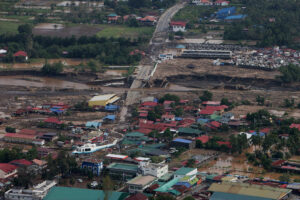THE SENATE is expected to scrutinize state flood control programs when it starts plenary debates on the proposed P6.352-trillion national budget for 2025 after the onslaught of severe tropical storm Trami, locally known as Kristine, according to the Senate president.
“Theoretically, rising seas and higher flood waters must lead to rising appropriations and a higher budget for climate adaptation, of which, I must emphasize, flood control is but one component,” Senate President Francis “Chiz” G. Escudero said in a statement on Monday.
“We will not only exact accountability but also make sure the 2025 budget will provide preventive measures to avoid a recurrence as well as adequate rehabilitation and response in case of a similar calamity in the future.”
At least 100 people have died as severe tropical storm Trami battered the country, the National Disaster Risk Reduction and Management Council said in a statement on Sunday night, noting that more than half a million people have been displaced by the storm, while 36 are still missing.
Trami, described by Greenpeace Philippines as the “third highly devastating” weather event to hit the Philippines in 2024 alone, flooded over a hundred areas in Calabarzon, Mimaropa, Bicol, Western Visayas, Eastern Visayas, Zamboanga Peninsula, and the Bangsamoro.
Under the proposed budget for next year, approved by the House of Representatives on final reading last month, P303 billion is allotted to flood control projects under the Department of Public Works and Highways.
About P353 billion was set aside for building flood control projects this year.
The Senate president earlier said the chamber is aiming to start plenary debate on the proposed national spending plan by the second week of November once it is sponsored by around Nov. 6.
The Senate would then target to approve the P6.352-trillion national budget for 2025 by the second week of December at the latest, in time to submit it to the Palace before Congress adjourns.
Based on data from the Philippine Atmospheric, Geophysical and Astronomical Services Administration, a total 11 tropical cyclones entered the Philippine Area of Responsibility last year.
The Philippines, which faces an average of 20 typhoon yearly, also remained as the most disaster-prone country for the 16th consecutive year, according to the latest World Risk Index.
“Disaster response should not depend on people’s resiliency alone, but also on government response,” Mr. Escudero said. — John Victor D. Ordoñez

